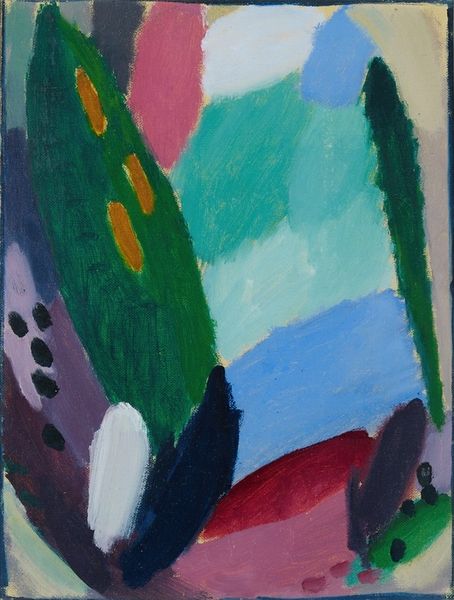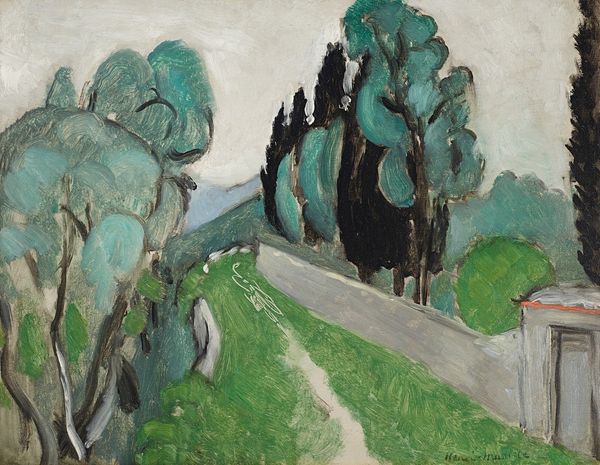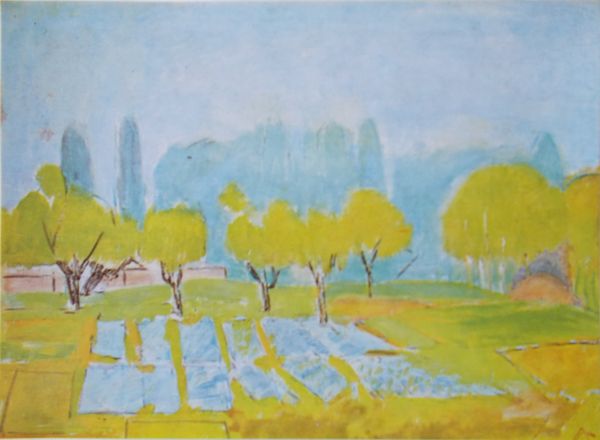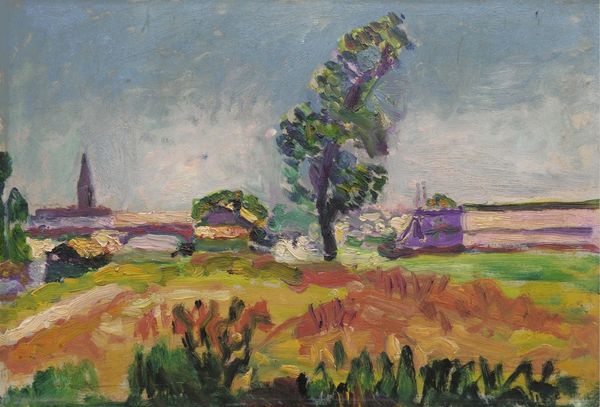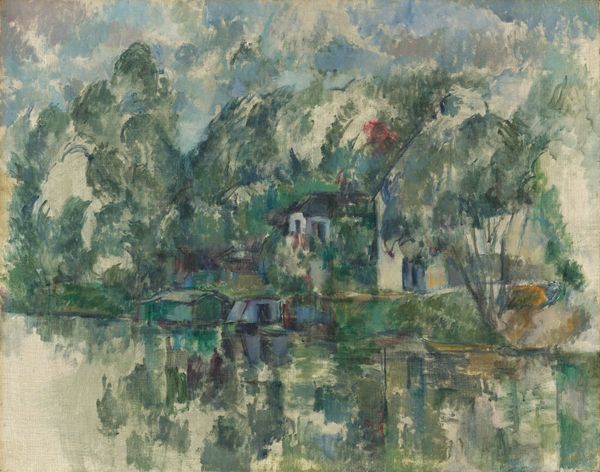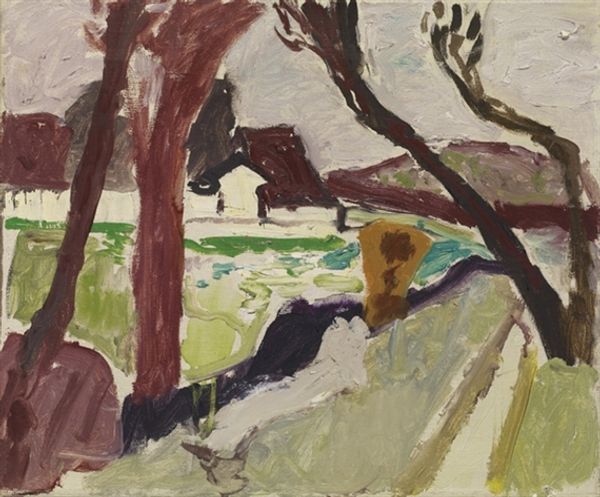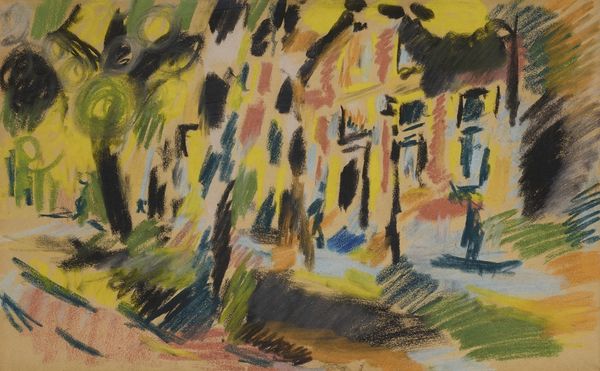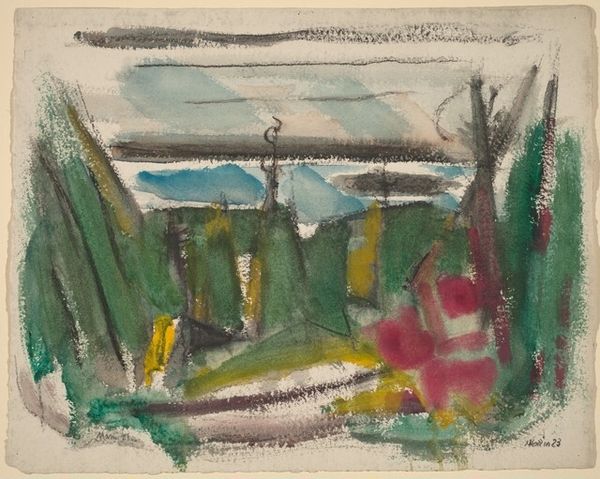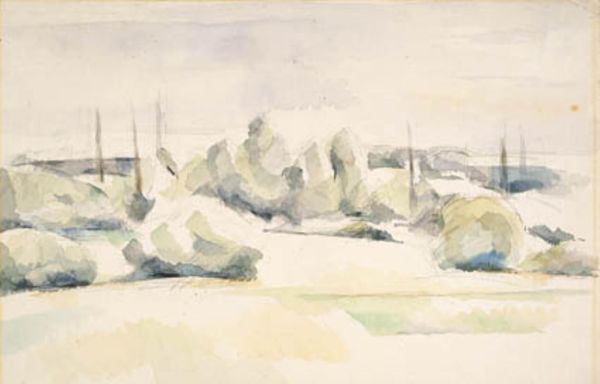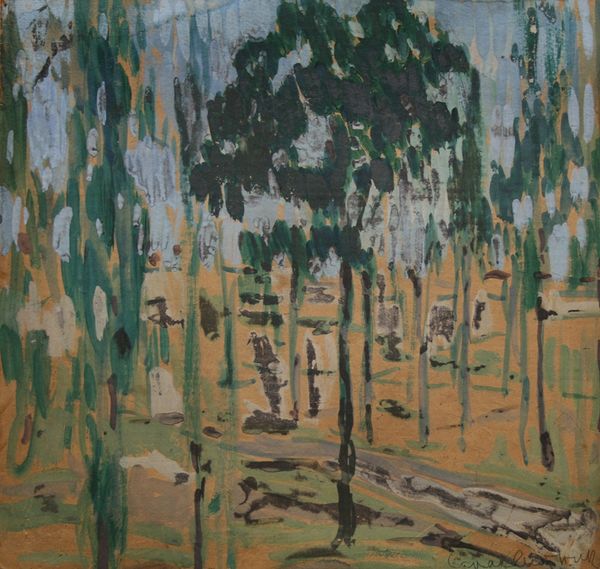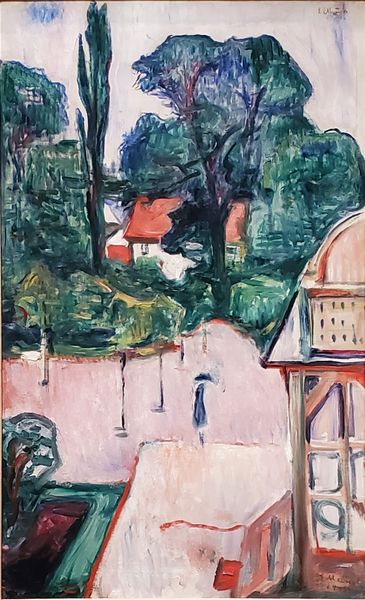
painting, oil-paint, impasto
#
painting
#
oil-paint
#
landscape
#
oil painting
#
impasto
#
expressionism
#
modernism
Dimensions: 60 cm (height) x 70.5 cm (width) (Netto), 69.8 cm (height) x 79.4 cm (width) x 5.5 cm (depth) (Brutto)
Curator: Harald Giersing painted this, it’s called "The Churchyard in Svanninge" from 1920. It feels so... visceral, doesn't it? Almost aggressively green. Editor: It does. Initially, it evokes a sense of disquiet, perhaps stemming from the convergence of modernist abstraction with the charged symbolism inherent in a graveyard scene. It's deceptively simple, but what strikes you first? Curator: That palpable sense of quiet menace simmering just beneath the surface of that lush green. You expect bird song but get silence. And that impasto! He really went for it, troweling on the oil paint like he was building, not painting. Like a gravestone, perhaps? Editor: Perhaps. The aggressive brushstrokes, characteristic of Expressionism, resist traditional landscape portrayals. Considering the context—the aftermath of World War I—could Giersing be responding to collective grief, to a societal grappling with loss, where traditional forms of mourning and representation felt inadequate? Curator: Totally! Like he’s throwing grief itself onto the canvas! Each dab of paint is a heavy sigh, a missed breath. I see something unresolved in those scrubby trees and leaning stones, maybe even anger or exhaustion with mortality itself. There is barely sky—it is all very earthy. Editor: The claustrophobic composition, denying us that traditional picturesque view, further reinforces this feeling. This might speak to a modernist questioning of traditional religious solace, hinting at a landscape overshadowed by trauma, where even nature offers no easy comfort. The churchyard is less a place of rest than a site of confrontation with death. Curator: Well said. A painterly epitaph... it has an uncomfortable beauty to it that nags. It isn't just about death; it feels like a restless refusal to sentimentalize it, to pretty it up for easy consumption. This landscape isn’t passively observed; it's a felt, wrestled-with thing. Editor: It invites a reflection on our relationship to mortality and memory, challenging us to consider the socio-political implications of representing spaces of grief. Definitely unsettling but ultimately, deeply poignant. Curator: Poignant is right... okay, next up... hopefully a still life of cake.
Comments
No comments
Be the first to comment and join the conversation on the ultimate creative platform.
